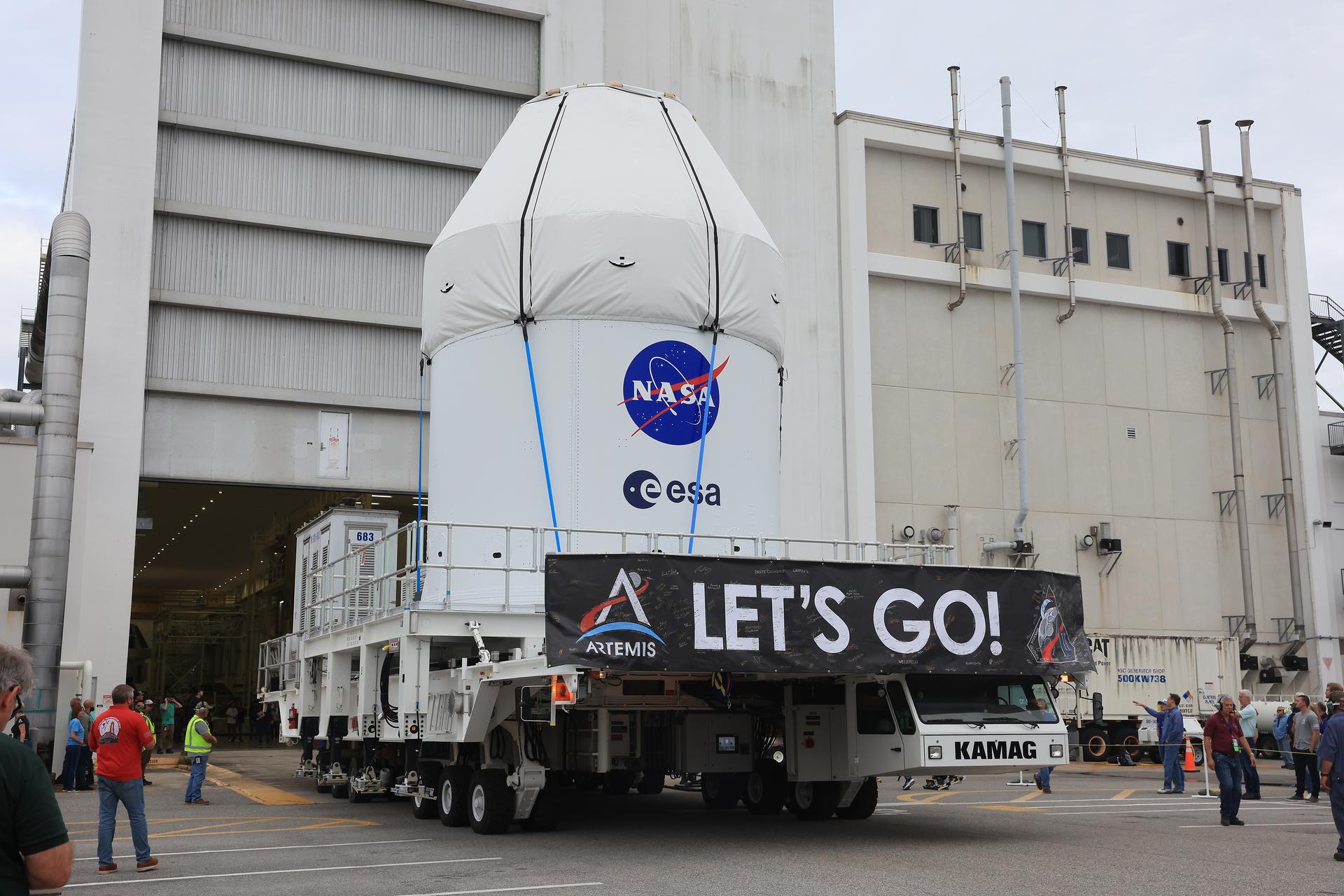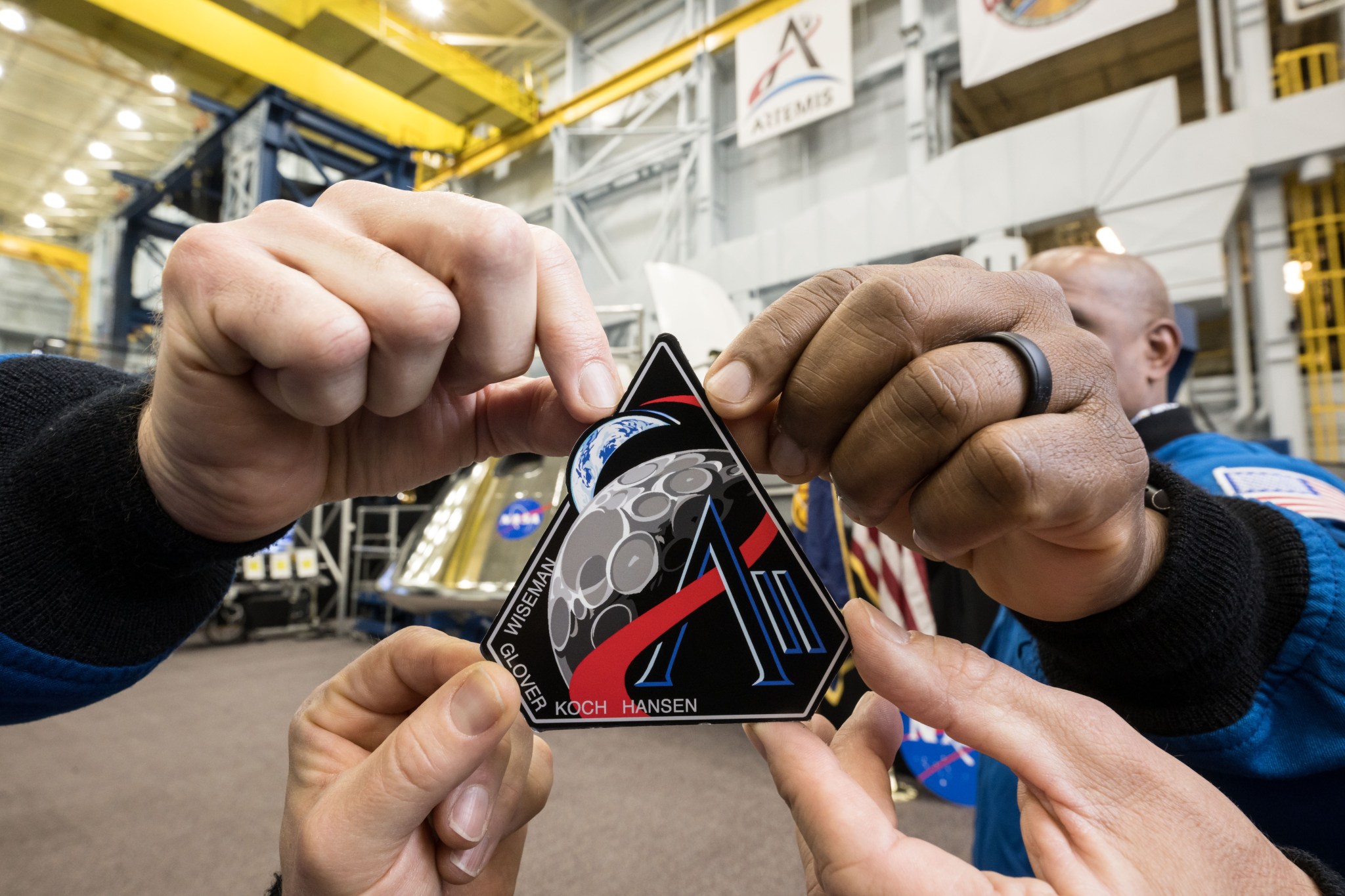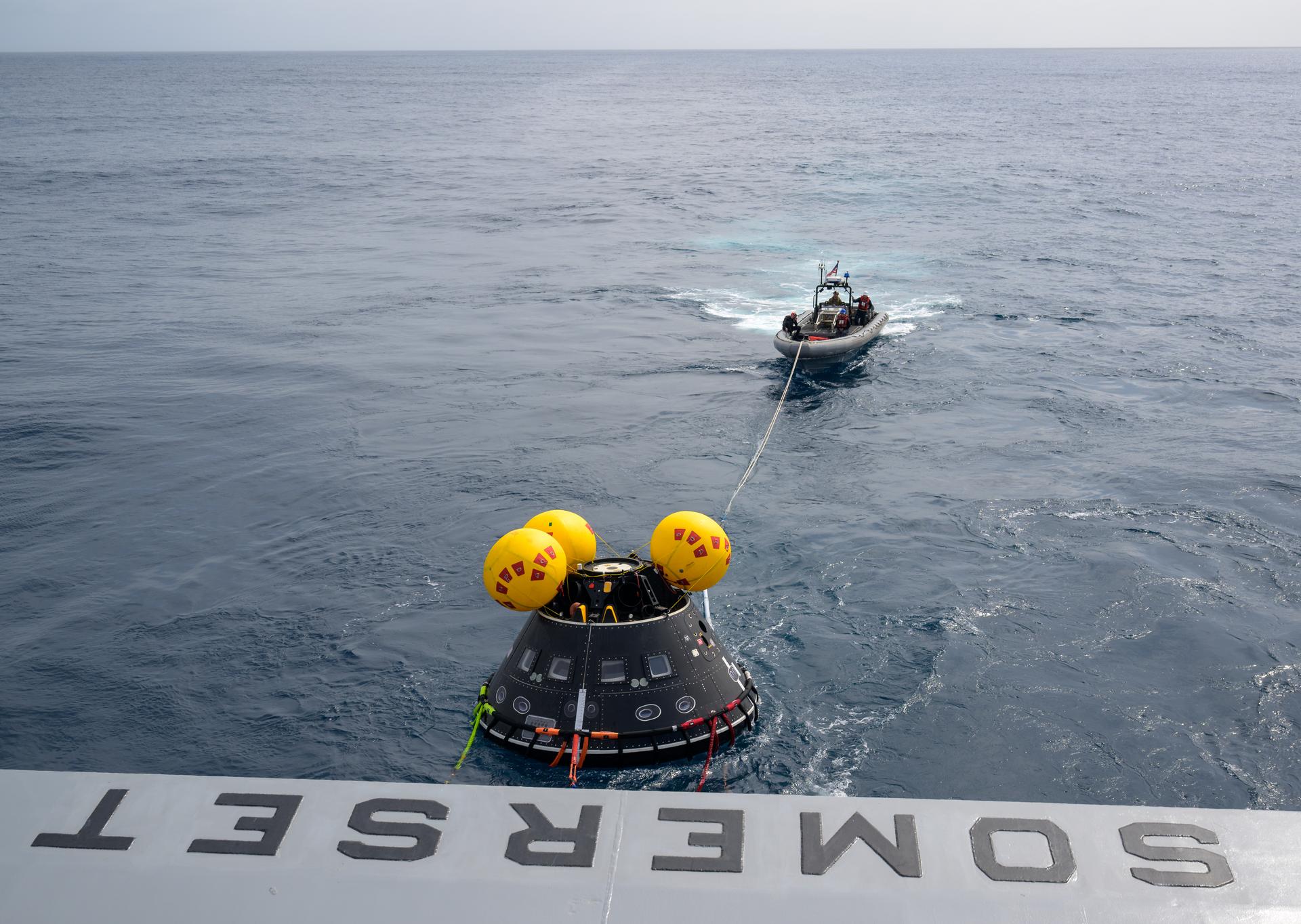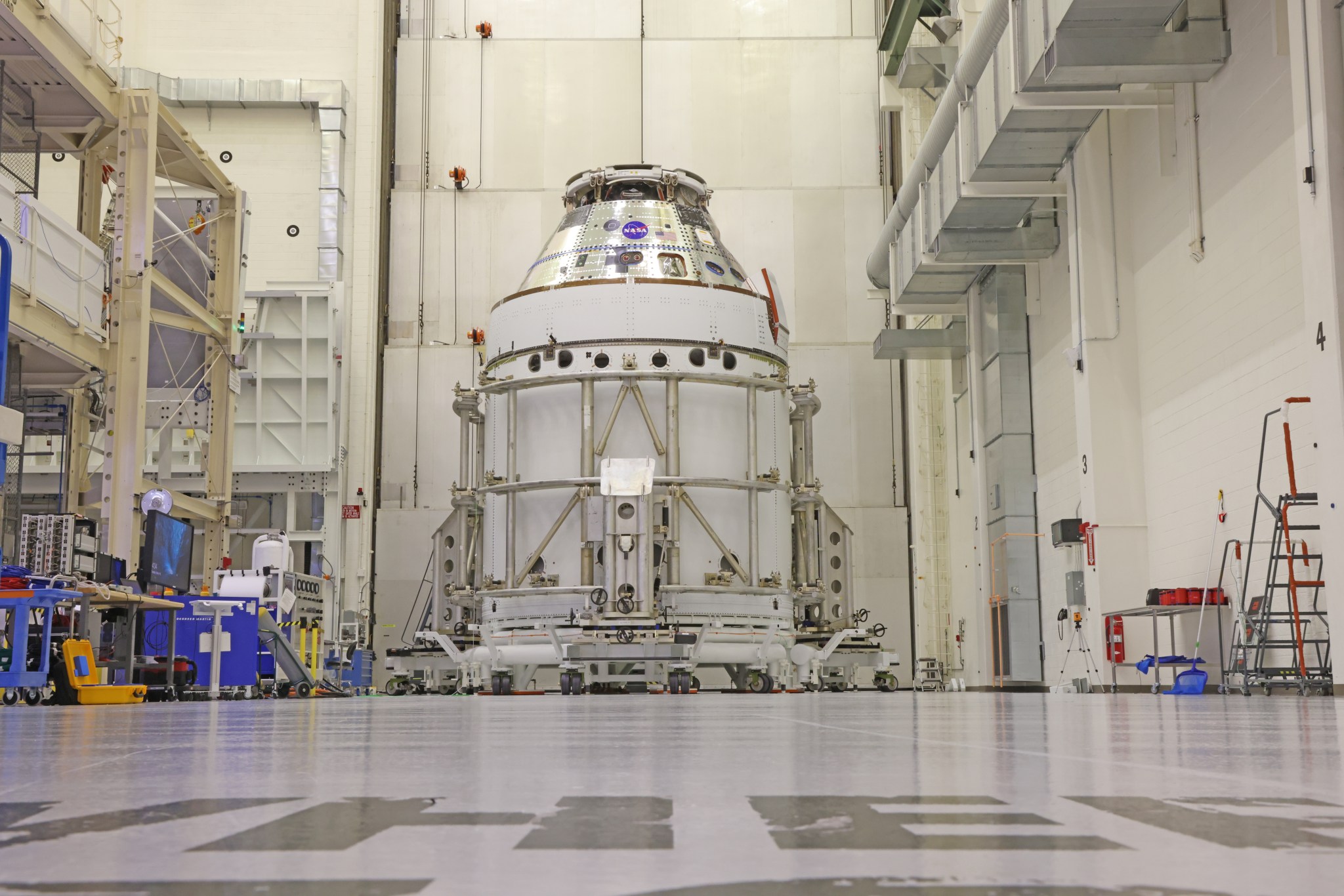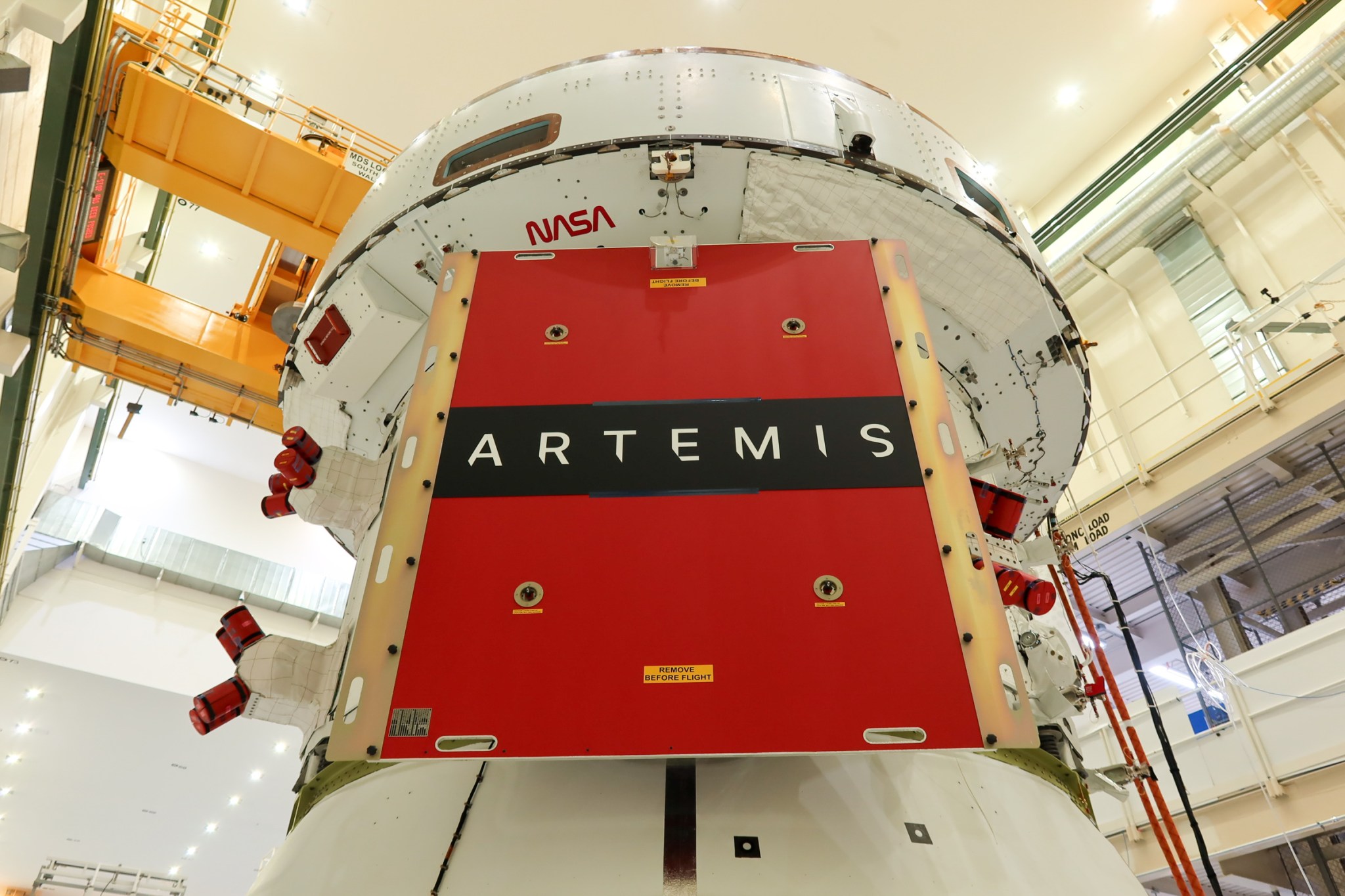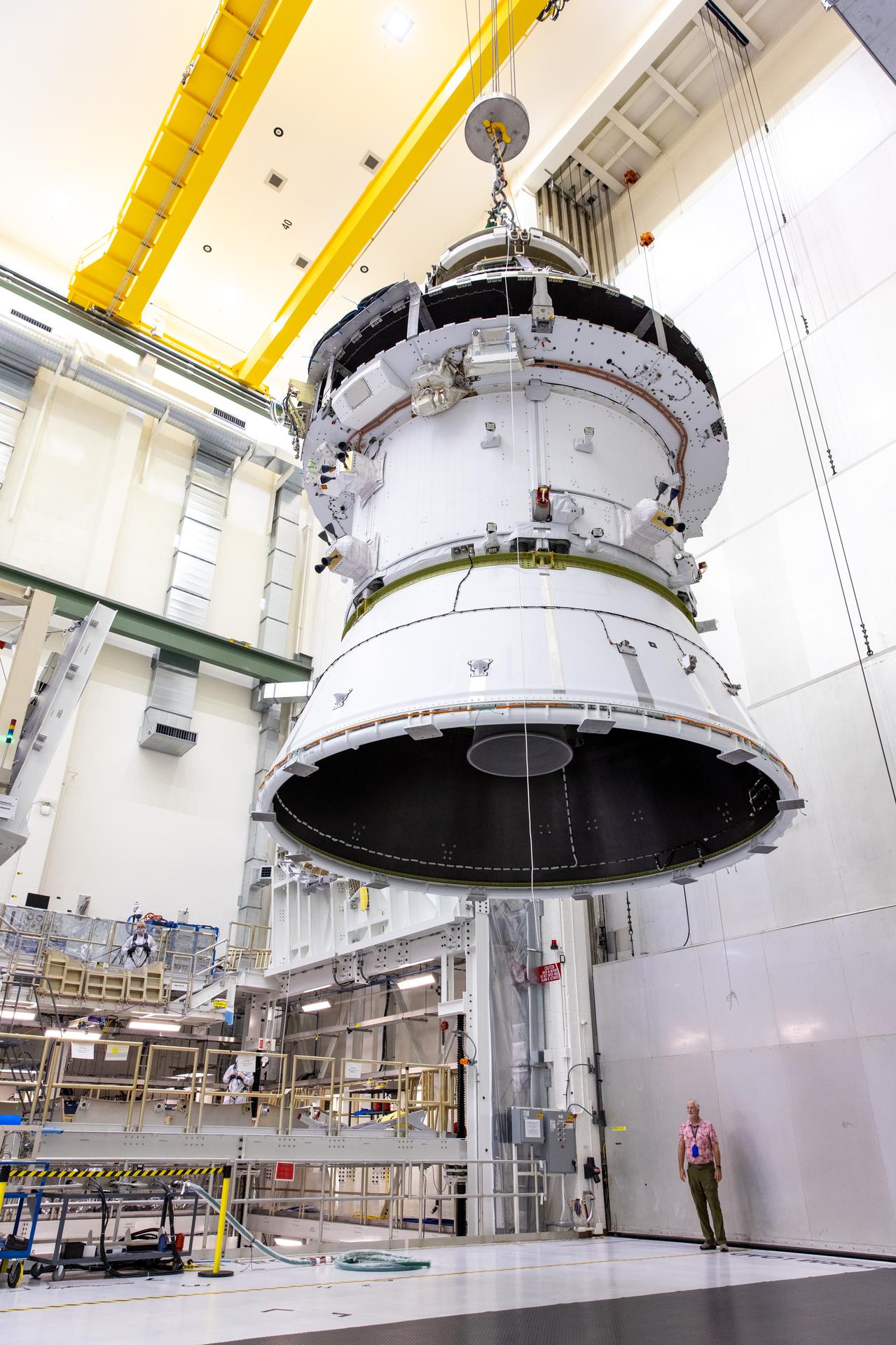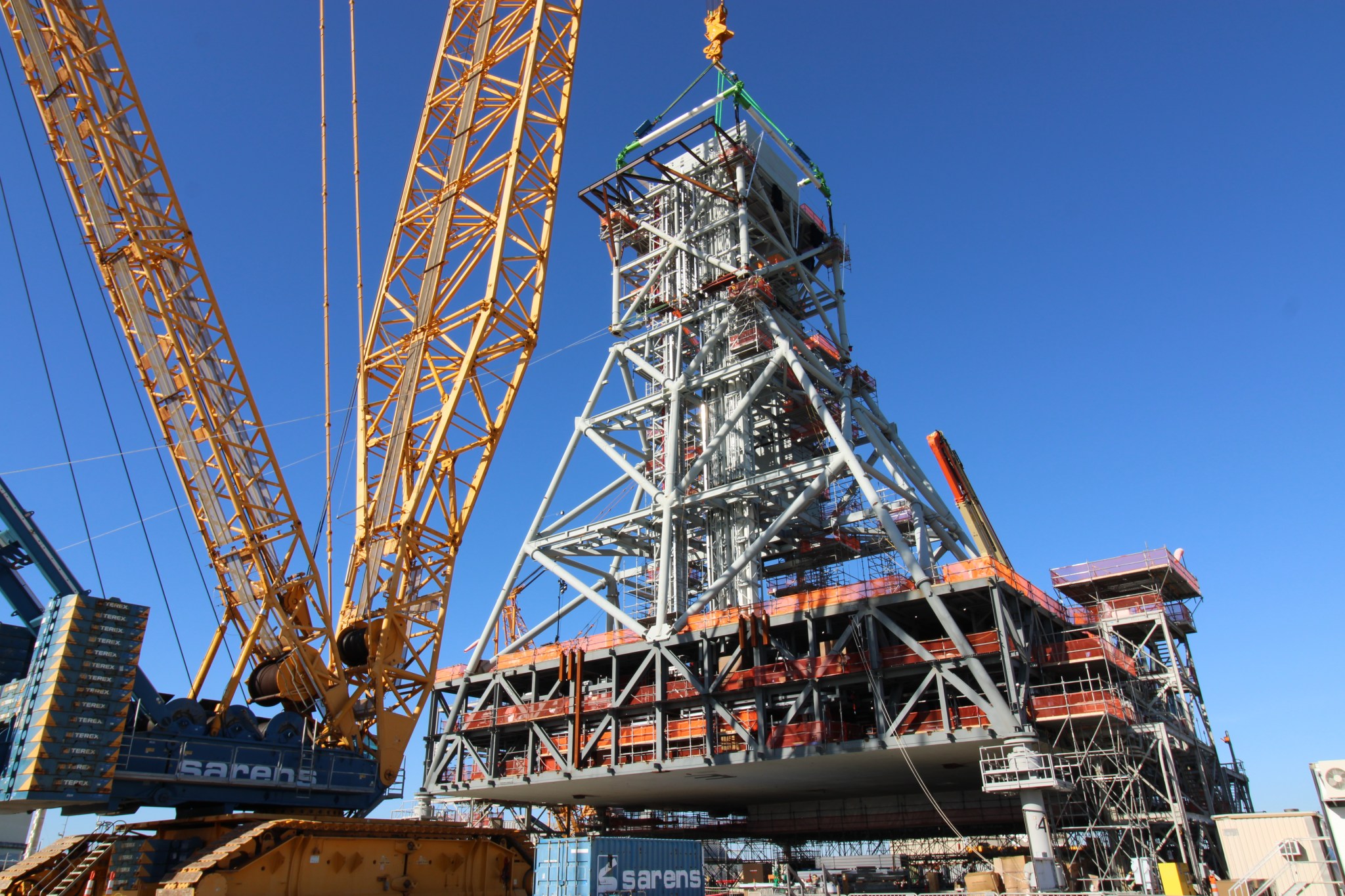Technicians move the Orion spacecraft for NASA’s Artemis II test flight out of the Neil A. Armstrong Operations and Checkout Building to the Multi-Payload Processing Facility at Kennedy Space Center in Florida on Saturday, May 3, 2025. NASA/Kim Shiflett Engineers, technicians, mission planners, and the four astronauts set to fly around the Moon next year on Artemis II, NASA’s first crewed Artemis mission, are rapidly progressing toward launch. At the agency’s Kennedy Space Center in Florida, teams are working around the clock to move into integration and final testing of…
Read MoreTag: Artemis 2
Artemis II Insignia Honors All
Robert Markowitz The four astronauts who will be the first to fly to the Moon under NASA’s Artemis campaign have designed an emblem to represent their mission that references both their distant destination and the home they will return to. The crew unveiled their patch in this April 2, 2025, photo. The crew explained the patch’s symbolism, and its play on the abbreviation of Artemis II to AII, with the following description: The Artemis II test flight begins when a mighty team launches the first crew of the Artemis generation.…
Read MoreNASA Trains for Orion Water Recovery Ahead of Artemis II Launch
4 min read Preparations for Next Moonwalk Simulations Underway (and Underwater) The Crew Module Test Article (CMTA), a full scale mockup of the Orion spacecraft, is seen in the Pacific Ocean as teams practice Artemis recovery operations during Underway Recovery Test-12 onboard USS Somerset off the coast of California, Saturday, March 29, 2025. NASA/Bill Ingalls Preparations for NASA’s next Artemis flight recently took to the seas as a joint NASA and Department of Defense team, led by NASA’s Exploration Ground Systems Program, spent a week aboard the USS Somerset off the…
Read MoreNASA’s Artemis II Orion Service Module Buttoned Up for Launch
Technicians with NASA and Lockheed Martin fitted three spacecraft adapter jettison fairing panels onto the service module of the agency’s Orion’s spacecraft. The operation completed on Wednesday, March 19, 2025, inside the Neil A. Armstrong Operations and Checkout Building at NASA’s Kennedy Space Center in Florida. The European-built service module is the powerhouse that will propel the spacecraft to the Moon. Its four solar array wings which were installed to its exterior in early March. The latest addition of fairing panels on Orion’s service module will protect the solar array…
Read MoreNASA Invites Creators to Design Mascot for Artemis Moon Mission
Credit: NASA NASA is seeking design ideas from global creators for a zero gravity indicator that will fly aboard the agency’s Artemis II test flight. Zero gravity indicators are small, plush items carried aboard spacecraft to provide a visual indication of when the spacecraft and its crew reach space. This opportunity, with a submission deadline of May 27, asks for original designs representing the significance of NASA’s Artemis campaign, the mission, or exploration and discovery, and meet specific requirements for materials and size. “What better way to fly a mission…
Read MoreEngineers Install Orion Solar Array Wings for Artemis II
Technicians with ESA (European Space Agency) and Airbus installed the four solar array wings on NASA’s Orion spacecraft for Artemis II on March 3. The solar array wings, attached to the service module, deploy after Orion reaches space to power the spacecraft. Orion’s service module provides propulsion, thermal control, and electrical power, as well as air and water for the crew during their mission around the Moon. Each solar array wing has 15,000 solar cells to convert sunlight to electricity and is nearly 23 feet in length when fully deployed.…
Read MoreNASA Invites Media to Artemis II Moon Mission Activities at Kennedy
A massive crane lifts NASA’s Orion spacecraft out of the Final Assembly and System Testing cell and moves it to the altitude chamber to complete further testing on Thursday, Nov. 7, 2024, inside the Neil A. Armstrong Operations and Checkout building at NASA’s Kennedy Space Center in Florida. The altitude chamber simulates deep space vacuum conditions, and the testing will provide additional data to augment data gained during testing earlier this summer. Credit: NASA/Kim Shiflett Media are invited to visit NASA’s Kennedy Space Center in Florida, to capture imagery of…
Read MoreHow to Fly NASA’s Orion Spacecraft
During the Artemis II mission to the Moon, NASA astronauts Reid Wiseman and Victor Glover will take control and manually fly Orion for the first time, evaluating the handling qualities of the spacecraft during a key test called the proximity operations demonstration. This is how to fly Orion. On NASA’s Artemis II test flight, the first crewed mission under the agency’s Artemis campaign, astronauts will take the controls of the Orion spacecraft and periodically fly it manually during the flight around the Moon and back. The mission provides the first…
Read MoreArtemis II Stacking Operations Update
Engineers and technicians with NASA’s Exploration Ground Systems Program integrate the right forward center segment onto mobile launcher 1 inside the Vehicle Assembly Building at NASA’s Kennedy Space Center in Florida on Wednesday, Jan. 22, 2025. The boosters will help support the remaining rocket components and the Orion spacecraft during final assembly of the Artemis II Moon rocket and provide more than 75 percent of the total SLS (Space Launch System) thrust during liftoff from NASA Kennedy’s Launch Pad 39B NASA/Kim Shiflett Teams with NASA’s Exploration Ground Systems Program continue…
Read MoreNASA Kennedy Ground Systems Prepping Hardware for Artemis II, Beyond
Teams with NASA are gaining momentum as work progresses toward future lunar missions for the benefit of humanity as numerous flight hardware shipments from across the world arrived at the agency’s Kennedy Space Center in Florida for the first crewed Artemis flight test and follow-on lunar missions. The skyline at Kennedy will soon see added structures as teams build up the ground systems needed to support them. Crews are well underway with parallel preparations for the Artemis II flight, as well as buildup of NASA’s mobile launcher 2 tower for…
Read More